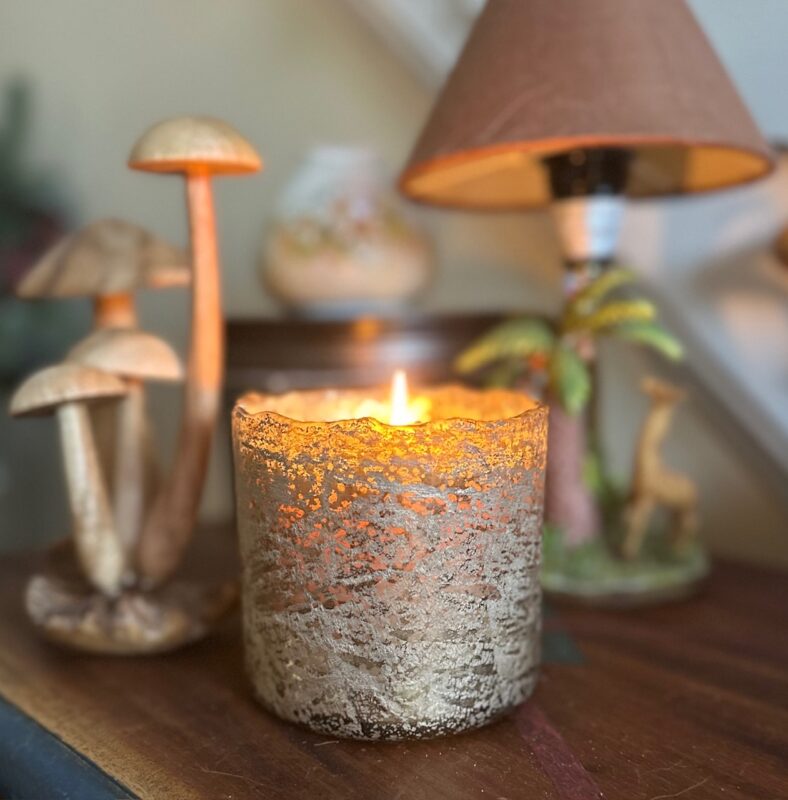Explore The Different Types of Candles
Candles have played a vital role in human civilization for centuries, providing not only light but also symbolizing various cultural and traditional beliefs.
Candles hold significant importance across different cultures and religions, often representing hope, purity, and enlightenment. The gentle glow of a candle creates an ambiance that is both soothing and spiritual.
Types of Candles
Characteristics of Wood Candles
Wood candles are a distinct type of candle that combines traditional wax with natural wood elements. These elements often include wooden holders that add a rustic and organic touch to the candle.
- Wooden Holders: Wood candles feature wooden holders, which provide a unique and aesthetic base, enhancing the overall sensory experience.
- Aesthetic Appeal: These candles typically have a rustic, earthy appearance, making them perfect for natural and bohemian decor styles.
- Eco-Friendly: Using wooden holders can be more sustainable and environmentally friendly compared to other materials.
Benefits of Wood Candles
- Unique Fragrance Distribution: The wooden holders help maintain a steady burn, which can improve the distribution of fragrance in the room.
- Ambiance: The natural wood elements add a layer of comfort and coziness, making them ideal for creating a warm and inviting atmosphere.
Glass Candles
Characteristics of Glass Candles
Glass candles are among the most popular types of candles due to their versatility and aesthetic appeal. These candles are typically housed in glass containers, which can range from simple and clear to intricately designed.
- Versatility: Glass candles come in various shapes, sizes, and designs, making them suitable for any decor style, from modern to vintage.
- Safety: The glass container helps contain the wax, reducing the risk of spills and improving safety.
- Durability: High-quality glass containers can be reused for other purposes once the candle is burned out.
Benefits of Glass Candles
- Enhanced Fragrance: The enclosed nature of the glass container helps to trap the fragrance, allowing it to diffuse slowly and evenly.
- Decorative Element: Glass candles, such as a jar candle, serve as beautiful decor pieces, adding elegance and sophistication to any room.
Metal Candles
Characteristics of Metal Candles
Metal candles are a robust and stylish option, often featuring metal tins or containers that add a contemporary or industrial look to the decor.
- Durability: Metal containers are highly durable and less likely to break compared to glass, making them ideal for travel or outdoor use.
- Heat Resistance: Metal is highly heat-resistant, ensuring that the container remains intact even with prolonged use.
- Reusable: Metal tins can be easily cleaned and repurposed, adding to their eco-friendly appeal.
Benefits of Metal Candles
- Travel-Friendly: The sturdy nature of metal candles makes them perfect for taking on trips without the worry of breaking.
- Industrial Chic: Metal candles complement modern, minimalist, and industrial decor styles, adding a touch of sophistication.
The artistry behind candle making combines creativity with science using wax, wick, and fragrance:
- Wax: The type of wax used, such as beeswax, soy wax, or paraffin wax, determines the candle’s overall performance.
- Wick: High-quality wicks made from materials like cotton ensure even burning without excessive smoke or soot.
- Fragrances: Essential oils blended carefully into melted wax before pouring into molds or containers enhance the ambiance created by candles.
Selecting the right candle involves considering factors such as purpose, size, placement, burn time, fragrance preference, and cost budget. Choose wisely based on your needs!
Safety measures should always be observed when using candles:
- Never leave them unattended.
- Place them on heat-resistant surfaces away from flammable materials.
- Trim wicks before each use.
To prolong your candle’s lifespan:
- Store them properly.
- Protect them from dust.
- Trim any mushrooming at the tip of the wick after each use.
When purchasing candles, consider factors such as wax quality, wick type, and fragrance strength. Look out for reputable brands known for craftsmanship and quality assurance.
More types of candles
- Pillar Candles
Pillar candles are versatile cylindrical-shaped creations that stand alone without needing support from holders or containers. They come in different sizes ranging from small votive pillars to large statement pieces perfect for centerpiece arrangements at events or home decor accents.
These elegant pieces can be found in an array of colors and patterns to suit any aesthetic preference or occasion theme.
- Taper Candles
Tapered at one end with a wider base, taper candles add sophistication wherever they’re placed. Often used in formal settings such as candlelit dinners or religious ceremonies, taper candles are available in different lengths and colors, allowing you to create visually stunning displays.
- Votive Candles
Votive candles are small, cylindrical-shaped creations requiring a votive holder for support. Commonly used in religious rituals or as decorative accents on tables or mantels, votives come in different colors and scents, making them versatile for any occasion.
- Tea Light Candles
Tealight candles are tiny circular-shaped wonders fitting into shallow containers called tealight holders. These compact marvels emit a soft glow and can be used individually or grouped, creating an enchanting ambiance at weddings, parties, or even during relaxing baths.
- Container/Jar Candles
Container or jar candles offer both functionality and style. They consist of wax poured into heat-resistant glass jars with a wick protruding from the center. The container not only protects surfaces from dripping wax but also adds an aesthetic touch to any space.
The Art and Science Behind Candle Making
Candle-making is a time-honored tradition that dates back centuries to ancient civilizations. It involves skillfully blending various elements such as wax, wick, and fragrance to produce not just a functional item but also a visually stunning masterpiece. Let’s take a closer look at each essential component:
Wax
The type of wax used is pivotal in determining the quality and characteristics of the final product. Beeswax, soy wax, paraffin wax, and palm wax are among the diverse options available. Each variant boasts its own distinct properties – beeswax offers a natural touch with hints of honey sweetness, soy wax is environmentally friendly and yields clean-burning candles, paraffin wax provides rich scent diffusion and color versatility, while palm wax results in intricately textured candles.
Wick
Serving as the lifeline for your candle flame, the wick plays a crucial role in fuel delivery. Typically crafted from braided cotton or other natural fibers treated with specialized chemicals for optimal burn performance. Selecting an appropriate wick size is paramount; too small may lead to uneven burning (tunneling), whereas too large can cause excessive smoke or soot emission.
Fragrance
Infusing fragrance oils or essential oils allows you to personalize your candles with enchanting scents that envelop your space when ignited. From soothing lavender to zesty citrus blends, there exists an array of possibilities for creating captivating aromas.
Now let’s delve into the meticulous step-by-step process involved in crafting your very own candles:
Melting
Commence by melting their chosen wax using either a double boiler method or microwave-safe container on low heat settings until it transforms into liquid form entirely.
Adding Color
If desired, introduce candle dye or color blocks into the molten wax to achieve the preferred shade palette.
Fragrance Incorporation
Once reaching the optimum temperature, gently blend in the selected scent until evenly dispersed throughout the mixture.
Pouring
Slowly pour scented wax within each container, taking care not to disturb or move the wick during the process. Leave a small gap at the top of each container to allow for expansion upon cooling.
Cooling & Curing
Allow the candles to cool undisturbed for several hours or overnight until fully solidified and cured before lighting up.
Crafted through both artistic flair and scientific precision, candle-making demands attention to detail and creativity. By grasping these core principles, you’ll gain a deeper appreciation for their allure while understanding how varied materials contribute to overall performance.
Exploring the Therapeutic Benefits of Candles
Discover the Therapeutic Benefits of Different Candle Types
Candles have a rich history of promoting relaxation and setting a tranquil ambiance. But did you know that they can also offer therapeutic advantages through the practice of aromatherapy? By incorporating scented candles into your daily routine, you can experience a multi-sensory journey that positively impacts your mood and overall well-being.
Aromatherapy with Candles
Aromatherapy involves using essential oils to enhance physical and psychological health. When paired with candles, it creates a holistic experience that can deeply influence your emotional state.
Mood-Boosting Scents
Each scent has its own unique effect on emotions and mental well-being. For instance, lavender is renowned for its calming properties, while citrus fragrances like lemon or orange can uplift and energize.
Relaxation and Stress Reduction
Lighting a candle with soothing scents such as chamomile or sandalwood can help cultivate a serene environment in your living space or workspace. The gentle glow of the flame combined with the comforting aroma aids in stress relief after a hectic day.
Enhancing Sleep Quality
Certain fragrances like lavender, vanilla, or jasmine are known for their sleep-inducing qualities. Lighting these candles before bedtime can relax both the mind and body, leading to improved sleep quality.
Meditation Support
Candles serve as focal points during meditation sessions by enhancing concentration levels and mindfulness practices. Opt for unscented varieties during meditation to fully immerse yourself in the present moment without any olfactory distractions.
Selecting the Ideal Candle for Aromatherapy
When choosing candles for aromatherapy purposes, opt for those crafted from natural materials such as soy, which burn cleaner and emit fewer toxins compared to paraffin wax options.
Safety First
While reaping the benefits of therapeutic candles, safety should always be paramount. Remember to keep lit candles away from flammable objects, never leave them unattended, and extinguish them before leaving the room or heading off to bed.
Incorporating scented candles into your daily regimen offers numerous benefits by fostering tranquility and promoting relaxation throughout various aspects of life – whether unwinding after work or setting an intimate ambiance for special occasions. Remember: choose premium-quality candles from reputable brands that prioritize aesthetics alongside therapeutic value.
Unique Fragrances of Himalayan Handmade Candles
At Himalayan Handmade Candles, we pride ourselves on offering unique and artisan fragrances that set our candles apart from the rest. Each candle is carefully crafted to provide a sensory experience transcending ordinary scents.
- Exotic Blends: Our fragrances include blends inspired by natural beauty. Choose between floral, fresh, citrus, or woody fragrances.
- Hand-Poured: Each candle is hand-poured with care, ensuring a high-quality product that burns evenly and releases its fragrance consistently.
- Natural Ingredients: We use natural, eco-friendly ingredients in our candles, including soy wax and essential oils, to provide a clean and health-conscious burn.
Read More Articles:
- Unlock the Mental Health Benefits of Scented Candles
- Discover the Beauty and Sustainability of Wood Candles
- The History of Candle Making
- Mastering Jar Candles: Tips for Optimal Burning and Longevity

Karla Butler is the Marketing & Social Media Manager at Himalayan Trading Post and A Touch of Country Magic. With a talent for creating compelling content and effective marketing strategies, Karla excels in building strong connections between brands and their audiences. When she’s not working, Karla enjoys crafting, channeling her creativity into handmade projects that add a personal touch to her life and home.

